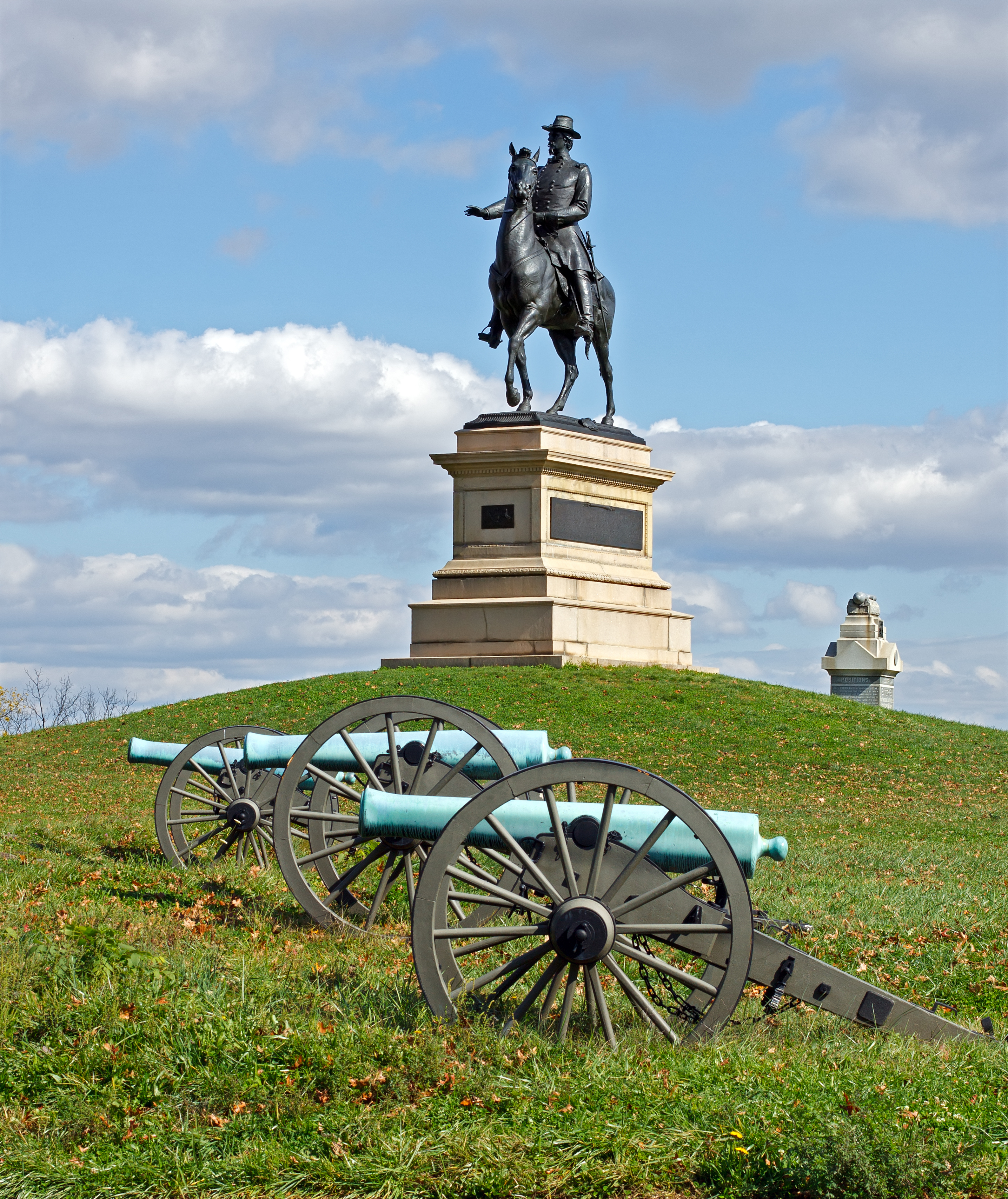
Historians and Hollywood producers alike have held up the story of Union Major General Winfield Scott Hancock and Confederate Brigadier General Lewis Armistead to illustrate the tragedy of internecine warfare. Hancock and Armistead had developed a friendship when stationed together in California before the war, with Armistead famously sending Mrs. Hancock the Armistead family bible for safekeeping as he left to join the Confederate As dramatically depicted in on the big screen in 1993’s Gettysburg, Armistead, a Brigade Commander in Pickett’s Division, found himself facing the center of the Union line, under the command of his friend Hancock, on July 3, 1863. Armistead, by all accounts, gallantly led his Brigade in what we now know as Pickett’s Charge, falling mortally wounded as he crossed the stone wall near “the angle,” generally considered to be the “high water mark” of the Confederacy. Knowing that he was in the hands of his friend’s troops, Armistead asked in vain to be taken to General Hancock, who had been wounded himself in the day’s fighting. The two never reconnected, despite their close proximity on the battlefield, and Armistead subsequently succumbed to his wounds.
The Irish Civil War produced no shortage of such sadly severed friendships, as the IRA in 1922, like the United States Army in 1861, found itself separating into two opposing forces. The treaty had been approved in the Dáil Éireann by a vote of 64 to 57, in favor, but the sentiment in the ranks was decidedly anti-treaty. For some pro-treaty IRA members, it was their unshakeable belief in Michael Collins that informed their decision to support the treaty. If the “Big Fellow” said that the treaty was a “stepping stone” to the thirty-two-county Republic of 1916, then that was good enough. Other pro-treaty volunteers saw themselves, in the conventional sense, as soldiers serving the elected government of their country – if the Dáil had approved the treaty, they reasoned, by however slim a margin, they were bound to support their government’s position. Anti-treaty IRA members, to the contrary, saw the treaty as a betrayal of the thirty-two county Republic of 1916.
The transformation of the Volunteers/IRA into the “National Army” had been a point of contention in late 1921, even before the Dáil voted to ratify the Treaty on January 7, 1922. As a revolutionary force, the IRA had emerged from the Irish Volunteers, through the infiltration of the Irish Republican Brotherhood. The question of chain of command had been at times been a bit murky, as the Volunteers/IRA had an elected executive of their own, separate and apart from the Dáil. The so-called “New Army Plan” of 1921 sought to conform the IRA to a more conventional structure, with a Ministry of Defense, General Headquarters and the like. The Volunteer/IRA Executive The process of molding the IRA into a conventional military structure was underway, and not universally popular, when the Treaty was ratified.
Efforts were made, in the aftermath treaty ratification to keep the IRA together. An IRA convention, first agreed to but then banned by the Provisional (Free State) Government, was held on March 26, 1922. With pro-Treaty attendance having been discouraged, the already likely result became inevitable, as the delegates voted to reestablish the IRA Executive and reaffirmed allegiance to the thirty-two County Republic of 1916. Units around the country had to decide which side they were on, and there are many accounts of groups of Volunteers taking their leave of their comrades after finding themselves on the “wrong” side of the split. Pro-treaty IRA units, which became the nucleus of the new “National Army,” tragically found themselves engaged against anti-Treaty units, in spite of rank-and-file members on both sides sharing a common goal, differing only in their belief as to the best way of achieving that goal.
July of 1922, the first full month of the war, saw open conflict between pro and anti-Treaty units across the country, as each side sought to establish local strongholds. The month ended with the shooting by National Army troops of the unarmed Harry Boland, a widely popular figure in the Republican movement who had been at “out” at the GPO in 1916 and had subsequently risen to prominence in the War of Independence. Boland, who had been serving as the Quartermaster of the Dublin anti-Treaty IRA, would die on August 1, 1922, prompting Michael Collins to reflect with regret upon the death of his longtime friend and comrade turned adversary.
Collins, writing to his fiancé Kitty Kiernan, noted that he had walked past St. Vincent’s Hospital, where a crowd had gathered, knowing that Boland was lying dead inside, and could not help but to reflect upon past times with his friend. Boland’s last words are alleged to have been “I forgive all of them.” The events surrounding Boland’s death and his relationship with Collins were portrayed, albeit with considerable factual license, in the 1996 film Michael Collins, making Collins and Boland, in a popular culture sense, the Hancock and Armistead of the Irish Civil War.
General Hancock survived his Gettysburg wounds and went on to be the Democratic nominee for President in 1880 before dying in 1886. Michael Collins was not so lucky – less than a month after the death of his friend Harry Boland, Collins himself was dead, caught in anti-Treaty ambush in his native County Cork on August 22, 1922. Collins body, like that of his friend Harry Boland just three weeks prior, would lie at St. Vincent’s Hospital before being taken to lie in state at City Hall.
There are no photographs of the funeral of Harry Boland, but the painter Jack B. Yeats, brother of William Butler Yeats, painted the scene. The painting is owned by the Niland Collection and can be seen at “The Model” a facility in County Sligo. The painting depicts the O’Connell monument in the background, and anti- Treaty IRA honor guard, and members of Cuman na mBan, carrying wreaths.
View the Painting and Learn more at: https://www.themodel.ie/?artwork=the-funeral-of-harry-boland-by-jack-b-yeats-1871-1957